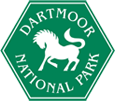Hedgebanks and Stone Walls
The hedgerows and stone walls of Dartmoor divide the landscape into a patchwork of fields and enclosures and are very characteristic of the moor. The landscapes richest in wildlife tend to be those with small fields, growing a variety of crops and being managed more or less traditionally. Many of our most popular and valued species depend on this type of landscape.
Hedgerows
The hedgerows of Dartmoor, like those in the rest of the West Country, are set on earth banks and many of them have been present for many centuries. Hedgerows are rich in wildlife and support a great number of native species. They allow species to travel safely across the landscape by using them as ‘corridors’. Most of the fields on Dartmoor are intensively managed for livestock grazing or silage making and are of little value to wildlife so it is the hedgerows and stone walls that offer a haven for both animals and plants. They are especially important for butterflies and moths, farmland birds, dormice and bats.
The majority of hedgerows on Dartmoor are species-rich with hawthorn, blackthorn, hazel, oak, ash and holly. Management of the hedges determines how tall these trees get. Some hedges are of just beech, these are less important for wildlife but do provide beech mast for flocks of wintering finches.
Characteristic plants associated with hedgerows and banks are primrose, early purple orchid, bluebell, red campion and greater stitchwort. These give a stunning colourful display in May and June. Other plants found include navelwort and various ferns.
Butterflies such as gatekeeper are often abundant and typical birds include song thrushes, yellowhammers and whitethroats. Buzzards nest in the taller trees.
Stone walls
Stone walls are frequently boundary features and many are old, especially those constructed of dry stone.
The stone walls form natural ‘rock gardens’ with plants such as stonecrop, navelwort, maiden-hair spleenwort and wall rue as well as a variety of lichens including the leafy dog lichen. The rare lanceolate spleenwort and parsley fern are nationally scarce and occur on some stone walls on Dartmoor. The largest known UK colony of little robin, a nationally rare, bright pink flower, occurs in the north of the National Park.
Wildlife
Birds associated with farmland include the skylark, song thrush, spotted flycatcher, linnet, bull finch and buzzard. The rare woodlark and cirl bunting are both the subject of high priority conservation work, and are also associated with hedgerows and stone walls in the farmed landscape.
Greater horseshoe bats use hedgerows and stone walls as flyways to forage for insects and to navigate around the landscape. Dormice use the thick species-rich Devon hedgerows for breeding and travelling around the landscape. They feed on the variety of flowers, nuts, berries and insects they find there. Hedgerows are often the only landscape feature connecting isolated woodlands.
The nationally rare brown hairstreak butterfly breeds in hedgerows on Dartmoor.
Threats
Threats to these habitats include agricultural intensification, use of pesticides, neglect, inadequate fencing from stock and too frequent cutting of hedgerows. Dartmoor National Park, together with many other conservation organisations, are working with farmers and landowners to help conserve and manage these valuable wildlife habitats.
